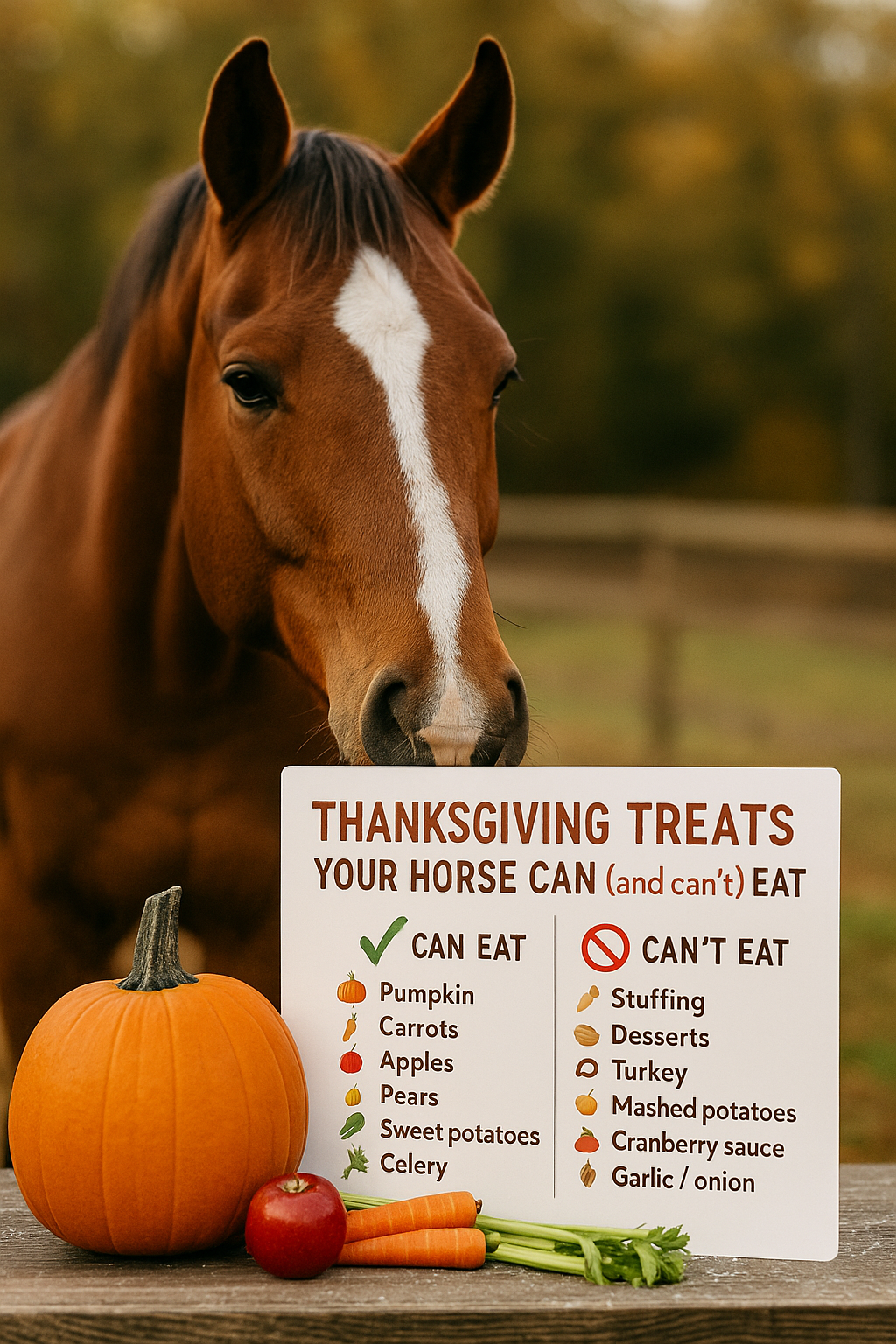

Good nutrition is the foundation of a healthy horse. Our Horse Feed & Nutrition category breaks down everything from forage and concentrates to supplements, special diets, and seasonal feeding strategies. These articles help you understand what your horse needs—and why—so you can make informed decisions that support optimal health, performance, and well-being.
-

Thanksgiving Treats Your Horse Can (and Can’t) Eat
Read more: Thanksgiving Treats Your Horse Can (and Can’t) EatA Helpful Guide for a Safe and Festive Holiday at the Barn Thanksgiving is a time for good food, gratitude, and gathering with the people (and horses!) we love. As we celebrate the holiday, many horse owners are tempted to share a little seasonal joy with their four-legged friends. But while some Thanksgiving foods are…
-

The Power of Forage: Why It’s Essential for Your Horse’s Health
Read more: The Power of Forage: Why It’s Essential for Your Horse’s HealthForage is the foundation of a horse’s diet, playing a crucial role in their overall health and well-being. As grazing animals, horses are naturally designed to consume small amounts of forage consistently throughout the day and night. Ensuring your horse has access to ample forage can help address common health challenges, improve their quality of…
-

Stop Your Bucket Dumpers: An Easy and Inexpensive Solution
Read more: Stop Your Bucket Dumpers: An Easy and Inexpensive SolutionIf you’ve ever dealt with horses that seem determined to dump their grain buckets, you know how frustrating (and wasteful) it can be. Fortunately, there’s a simple, budget-friendly solution to keep feed in the bucket where it belongs! Here’s an easy method that I use to prevent my horses from tipping their buckets, saving both…
-

Ionophores and Their Toxicity in Horses and Equines
Read more: Ionophores and Their Toxicity in Horses and EquinesIonophores are feed additives commonly used in cattle diets to enhance feed efficiency and promote weight gain. These compounds work by modifying rumen fermentation patterns and can be administered to all types of cattle, making them versatile across various segments of the beef industry. Like many other feed additives, ionophores are provided in small quantities…
-
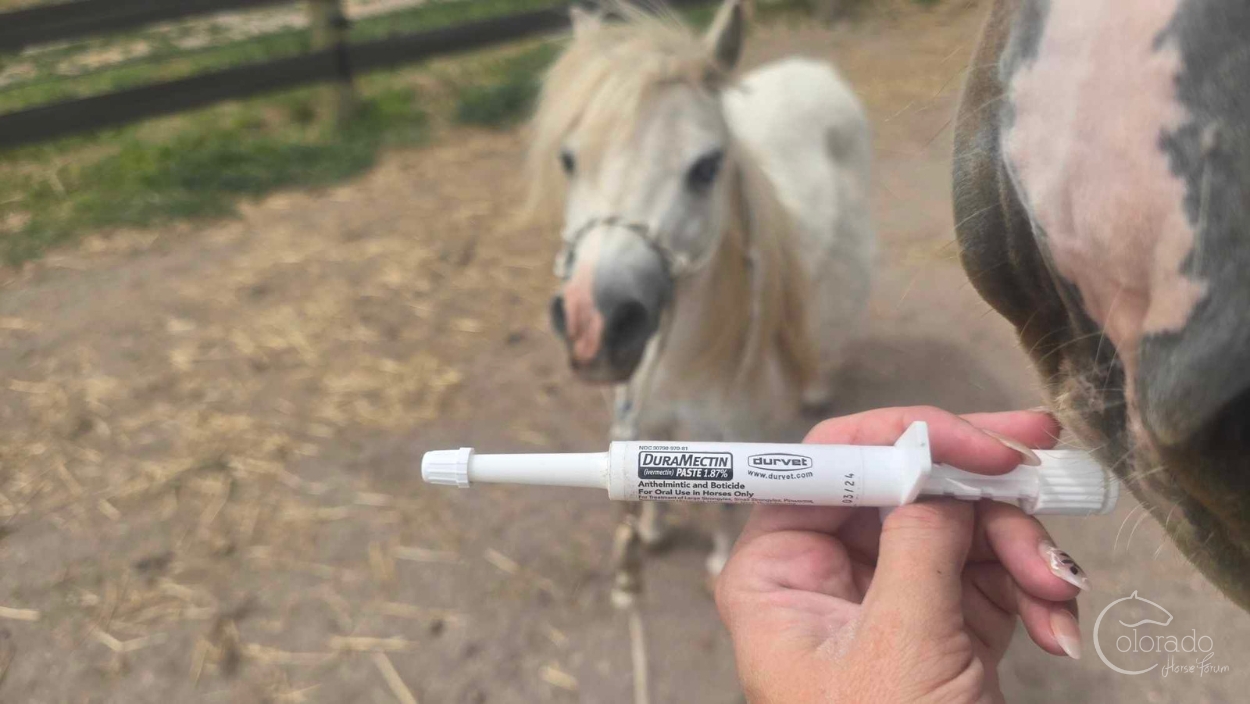
The Essential Guide to Deworming Horses in Colorado: Why It Matters for Your Horse’s Health
Read more: The Essential Guide to Deworming Horses in Colorado: Why It Matters for Your Horse’s HealthManaging the health and well-being of horses involves a multifaceted approach, with deworming playing a crucial role. However, deworming protocols vary, and what works for one horse or region may not be appropriate for another. This article explores the importance of deworming horses and emphasizes the need to consult with a veterinarian to develop a…
-

Blister Beetles Found in Colorado: A Serious Concern for Ranchers and Livestock Owners
Read more: Blister Beetles Found in Colorado: A Serious Concern for Ranchers and Livestock OwnersThe ash grey blister beetle, a member of the family Meloidae, has recently been discovered on properties all over Colorado. This discovery raises significant concerns due to the toxic chemical cantharidin produced by blister beetles, which poses a severe threat to livestock, especially horses. Understanding the implications and management of blister beetles is crucial for…
-
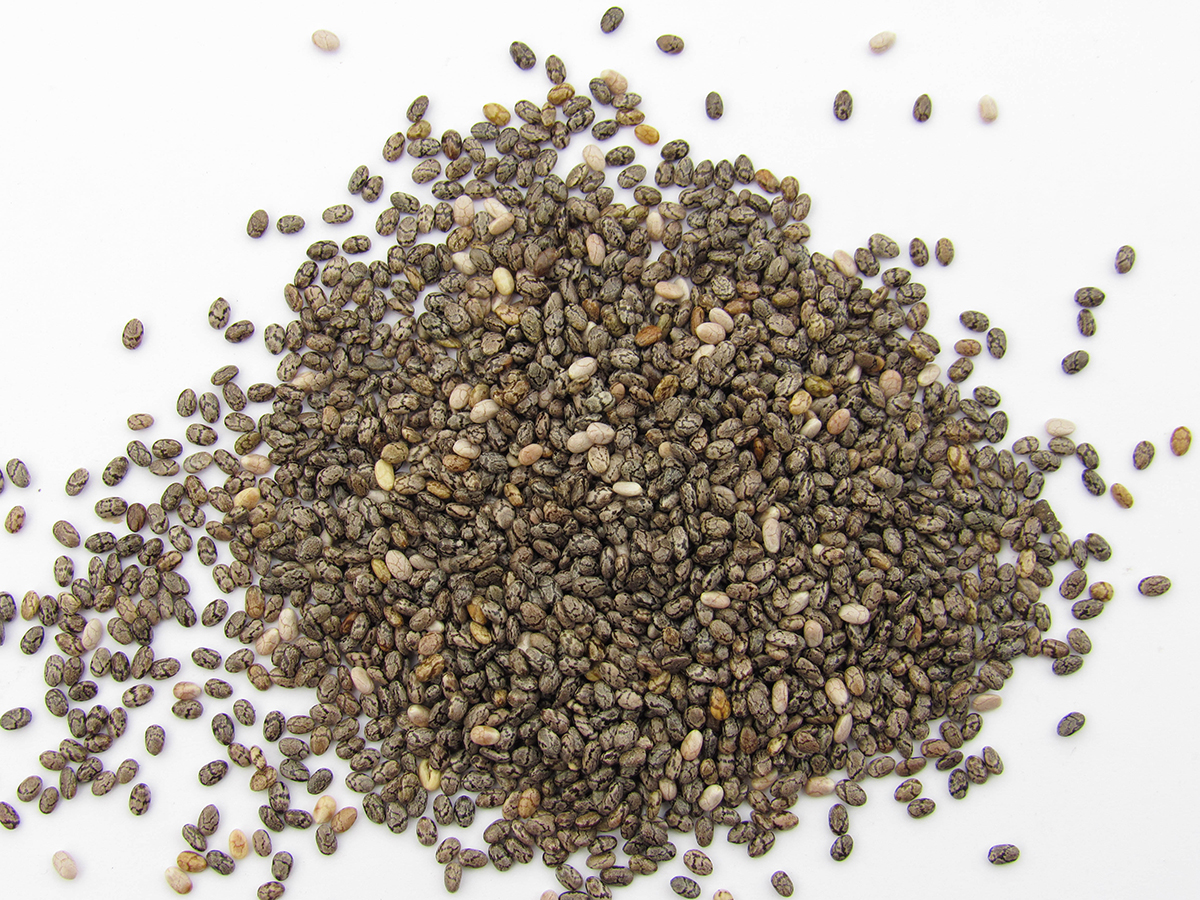
Chia Seeds: A Nutritional Powerhouse for Your Equine Companion
Read more: Chia Seeds: A Nutritional Powerhouse for Your Equine CompanionWhen it comes to equine nutrition, there’s a lot more to consider than just hay. Many horse owners are turning to natural supplements to enhance their horse’s health and performance, and one such superfood gaining popularity is chia seeds. Chia seeds aren’t just a trendy health food for humans; they offer a wide range of…
-
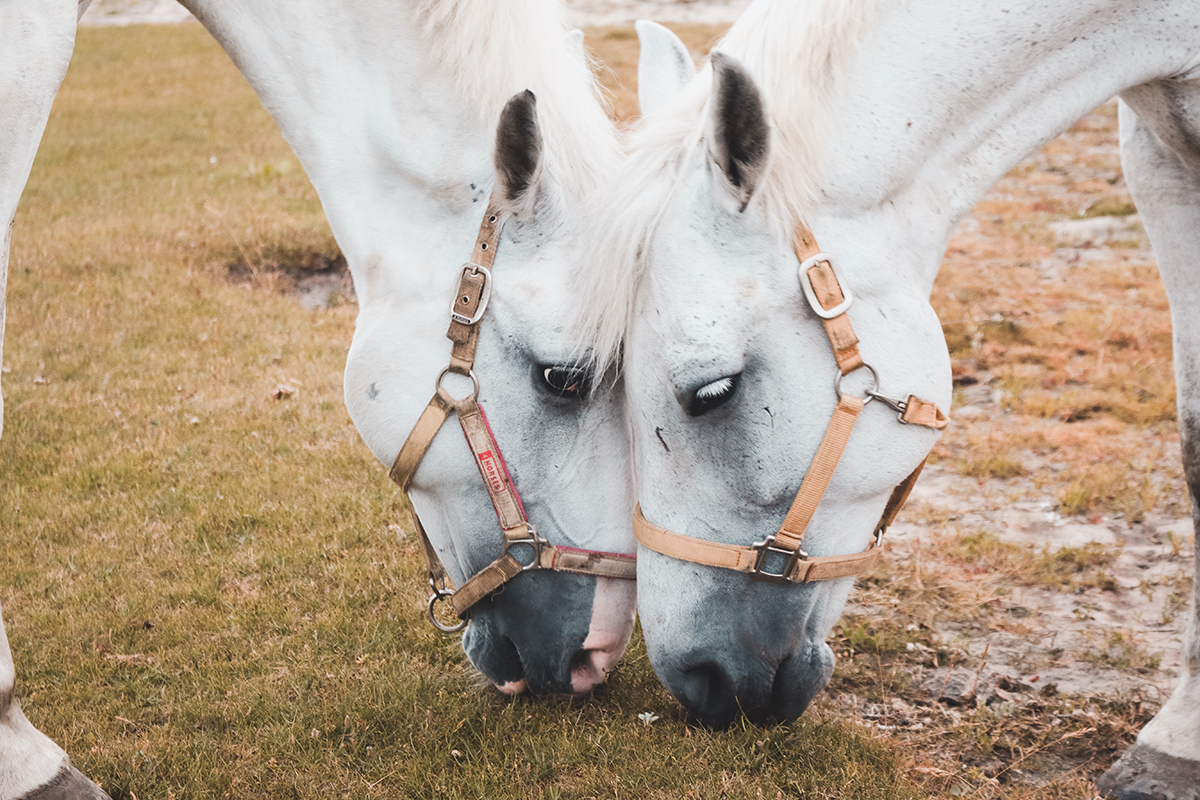
The Importance of All-Day Forage: Why Horses Thrive on Continuous Grazing
Read more: The Importance of All-Day Forage: Why Horses Thrive on Continuous GrazingOne of the most critical aspects of horse care is providing them with proper nutrition. Among the various components of a horse’s diet, forage stands out as a cornerstone. In this article, we will delve into the reasons why horses require all-day forage and how it contributes to their overall well-being. Please note there are…
-
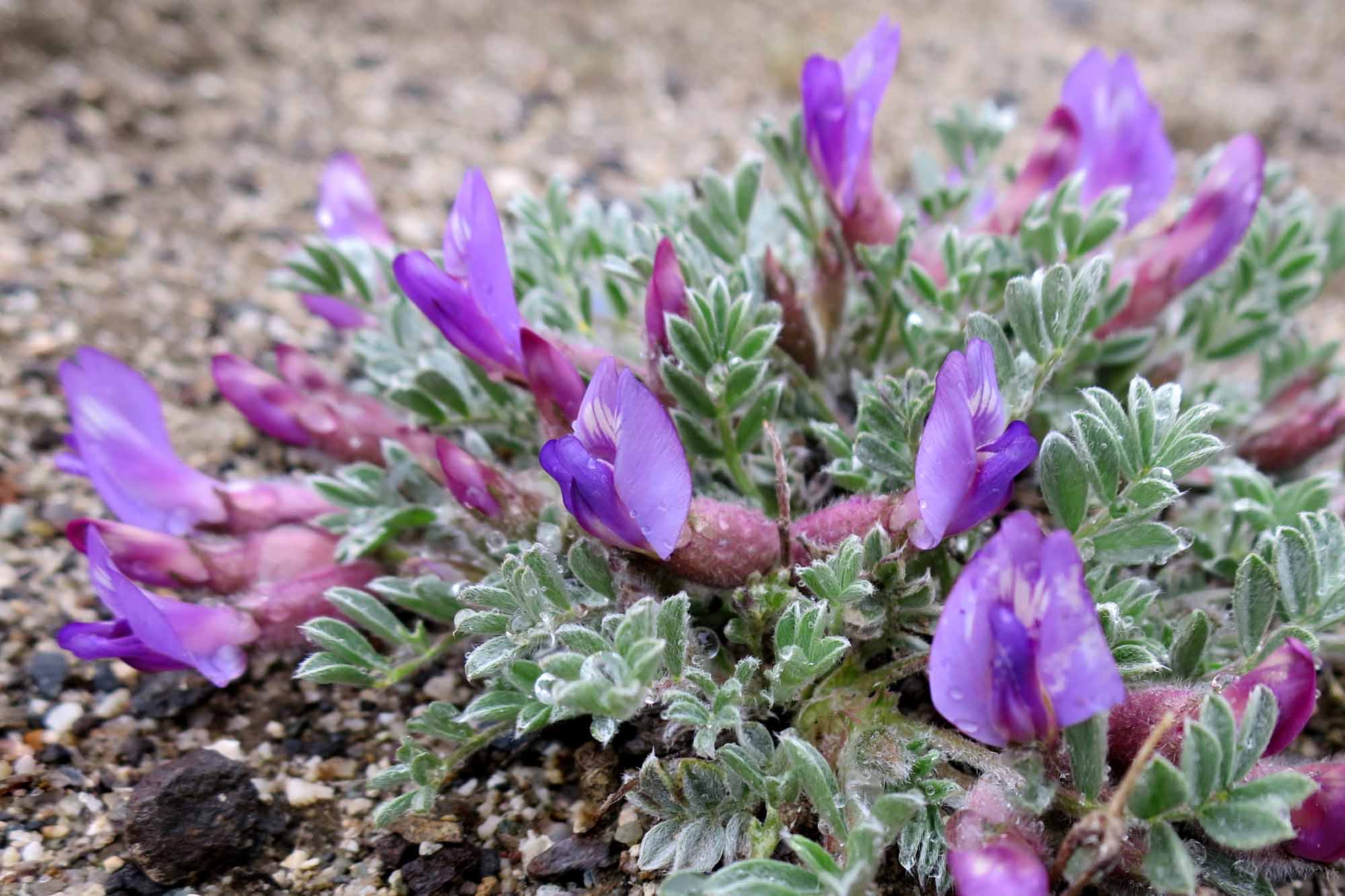 Facility Management, Horse Breeding, Horse Care, Horse Feed & Nutrition, Horse Health, Horse Ownership in Colorado
Facility Management, Horse Breeding, Horse Care, Horse Feed & Nutrition, Horse Health, Horse Ownership in ColoradoLocoweed and Horses: A Toxic Combo
Read more: Locoweed and Horses: A Toxic ComboLocoweed, also known as crazyweed, is a type of plant that belongs to the pea family (Fabaceae) and is native to North and Central America. It is known for its toxic properties, which can cause serious health issues in livestock and wildlife that consume it. Locoweed contains toxic alkaloids, such as swainsonine and selenium, which…
-

Easy and Secure Grain Storage for Multiple Types or Bags of Grain
Read more: Easy and Secure Grain Storage for Multiple Types or Bags of GrainI see people asking how to store multiple bags of grain securely for their horses all the time. As with everything horse, everyone has an opinion… but this is what I do for my grain storage! I use a contractor job site box so I can have multiple grain bags and types, without multiple containers,…
Search

About Una
Una moved to Colorado in 2007 and started the Colorado Horse Forum as a way to meet other equestrians in the area. Una now rides and competes in dressage. She operates a small dressage horse breeding program in Castle Rock.
Site Sponsors
Latest news
- Helping Colorado Horses Starts With You: Why We’re Inviting Equine Vets to Join the Vet Direct Safety Net
- Barn Party Ideas for the Holidays
- New Colorado Traction Laws: What Horse Owners Need to Know This Winter (Fall 2025 Update)
Categories
- Barn Life (1)
- Colorado Horse Events (7)
- Colorado Horse News (84)
- Community (1)
- Equestrian Grammar (3)
- Equine Welfare Programs (1)
- Facebook Group Articles (2)
- Facility Management (44)
- Giveaways & Sales (2)
- Health Alerts (1)
- Horse Breeding (2)
- Horse Care (75)
- Horse Feed & Nutrition (13)
- Horse Health (78)
- Horse Ownership in Colorado (235)
- Horse Tack (9)
- Horse Training & Showing (42)
- Local Highlight (2)
- Product Reviews (8)
- Tack Collections (12)
- Travel (4)


